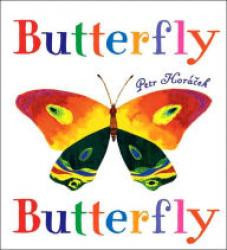Stephanie Norby's collections
Abraham Lincoln's Life: Looking at Personal Artifacts
What do personal possessions tell us about a person? This teaching collection includes: 1) artifacts that belonged to President Lincoln, 2) a handout to guide analyzing artifacts as primary sources, 3) a video of Harry Rubenstein, a historian at the National Museum of American History, telling about the objects, and 4) two videos of Harry Rubenstein describing how he verifies the history of objects.
 Stephanie Norby
Stephanie Norby
11
A House Divided: Photography in the Civil War
How does photography of the Civil War inform us about this period? This teaching collection includes the lesson plan, A House Divided: Photography of the Civil War, published by the Smithsonian American Art Museum. Students examine Civil War photographs, write captions, and discuss how viewing photographs enhances your understanding of historical events and concepts.
 Stephanie Norby
Stephanie Norby
9
American Authors and Innovation
Choose one of the American authors in this collection. Research the author and read some of his or her writings. Write a short persuasive essay arguing whether or not this author was innovative and if so how. Discuss whether or not innovation is important in determining the strength of a writer's work.
Analyze the portrait of your author using the portrait handout. Does the portrait capture the qualities that made this author innovative? If not, how would you change the portrait to capture these qualities?
 Stephanie Norby
Stephanie Norby
48
Borders
<p>A few objects that reflect borders -- both to keep people out and to keep them in. Also, objects that show people's resilience even in the worst of times.</p>
 Stephanie Norby
Stephanie Norby
101
Boxes
<p>A box is a container with a flat base and sides, typically square or rectangular and having a lid. Or is it? Look at the collection of boxes. How do you think these boxes are used? How are they different in shape? size? material? Why do you think they are so different?</p>
 Stephanie Norby
Stephanie Norby
18
Butterfly Diversity and Innovation in Nature
This is a collection that shows many different types of butterflies. Why do butterflies vary? What are the processes in nature that result in biodiversity? How is this process different from innovations created by people?
 Stephanie Norby
Stephanie Norby
21
Innovations in Coffee Cup Lids
Sometimes innovations are about something completely new and sometimes innovations are about small refinements in design. What can we learn about innovation from looking at something as ordinary as a coffee cup lid? Read the article about coffee cup lids and write a description for one of the lids, capturing its unique qualities. How do changes in coffee cup lids reflect larger changes in our society? Predict what will be the next innovation .
 Stephanie Norby
Stephanie Norby
57
Investigating a Place: California
What defines a place? Examine this collection of images from or about California to answer these questions: What are its unique set of physical and cultural conditions? How do these physical and cultural conditions interact? How is California connected to other places? What are the consequences of human activity on the cultural and physical landscape? Ask students individually or in small groups to create a collection in Learning Lab to represent the physical and cultural characteristics of another place (city, region, state). Using these collections, ask students to write summary statements describing the unique human and physical characteristics of places researched. Discuss student collections and what makes each place unique.
 Stephanie Norby
Stephanie Norby
68
Investigating a Place: Niagara Falls
What defines a place? Examine this collection of images from or about Niagara Falls to answer these questions: What are its unique set of physical and cultural conditions? How do these physical and cultural conditions interact? How is Niagara Falls connected to other places? What are the consequences of human activity on the cultural and physical landscape? Ask students individually or in small groups to create a collection in Learning Lab to represent the physical and cultural characteristics of another place. Using these collections, ask students to write summary statements describing the unique human and physical characteristics of places researched. In class discuss student collections and what makes each place unique.
 Stephanie Norby
Stephanie Norby
17






